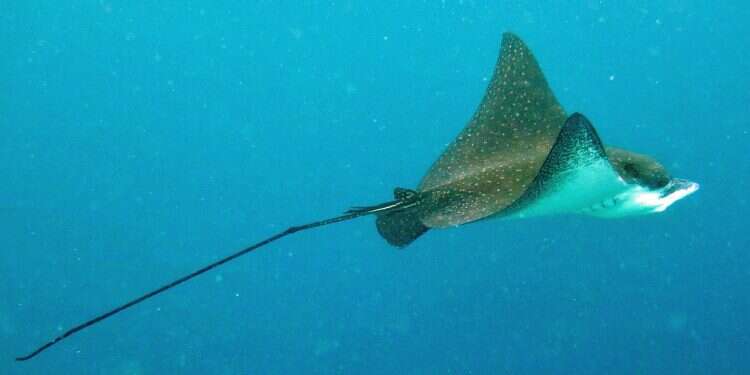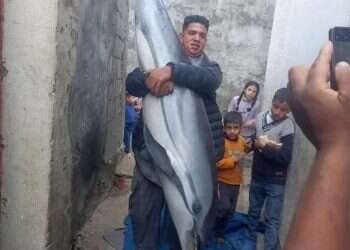In a rare sighting off the Red Sea coast over the weekend, a ranger from the Israel Nature and Parks Authority, scuba diving at Eilat's Coral Beach Nature Reserve, spotted a trio of fish that are listed as "vulnerable" on the International Union for Conservation of Nature's "Red List of Threatened Species."
Follow Israel Hayom on Facebook and Twitter
The ocellated eagle ray (Aetobatus ocellatus) or the whitespotted eagle ray is a species of cartilaginous fish, mostly found in the tropical Indo-West Pacific region near the Australian coastline.
This species is not directly targeted by commercial fisheries, but it is captured as accidental bycatch in fisheries targeting other species. Furthermore, it is occasionally captured alive to be displayed in public aquariums.
Reaching widths of 3.5 meters (over 11 feet) and lengths of almost 9 meters (some 30 feet) the spotted eagle ray is one of the largest eagle rays, with only the mantas growing bigger.
It is a foraging predator and is known to eat a variety of invertebrates and fish prey.
Spotted eagle rays reproduce via internal fertilization and give live birth, according to Oceana, a non-profit ocean conservation organization.
However, they do not connect to their young through a placenta, like in most mammals. Instead, embryos live off of energy obtained from yolk sacs, and only after the juveniles are able to survive on their own does the mother give birth to her young (1-4 pups per litter). This low reproductive potential, along with their natural rarity, contributes to experts considering spotted eagle rays as "vulnerable" or "near threatened" with extinction.
Subscribe to Israel Hayom's daily newsletter and never miss our top stories!




